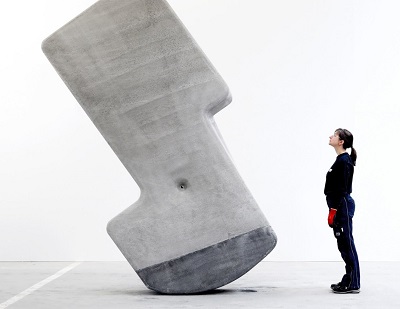 Wednesday, October 23, 2024
Wednesday, October 23, 2024  Wednesday, October 23, 2024
Wednesday, October 23, 2024 

As blogged on Fast Company, today, construction workers rely on cranes to lift the big slabs of concrete and other materials that go into many commercial building projects. But it hasn’t always been that way; for thousands of years, humans moved monumental stones by hand. A collaboration between Boston-based Matter Design and the building materials company Cemex Global R&D attempts to return to those ancient methods–while introducing an entirely new way to move heavy concrete slabs with nothing more than human hands.
Matter Design has spent years researching and building monumental architecture with ancient methods. For instance, the studio create a 2,000-pound stone sculpture that could be moved by hand after studying how Stonehenge and Easter Island’s archeological sites may have been built. It has also experimented with ancient Greek masonry techniques. Working with Cemex Global, they began their latest project with a series of experiments exploring the relationship between building materials and humans. What would an architectural element that could be moved by a single person look like?
The resulting project, called Walking Assembly, demonstrates the possibilities with a set of interlocking concrete puzzle pieces that the designers are able to assemble into a solid wall and staircase in about 15 minutes.
To create it, the designers engineered a series of 5-foot-tall concrete blocks, each weighing between 926 and 1,543 pounds and made from two different densities of concrete. Using some clever physics, they manipulated the center of mass of these blocks so that the blocks naturally move along their curved bottoms.
“It’s like rolling a wheel,” says Brandon Clifford, director and co-founder of Matter Design and assistant professor at MIT.
To lock each block in place, an elongated tool is placed inside a hole at its center. By adding more weight to the bottom of each piece so that it balances exactly on its lower center of mass, it acts almost like a parking brake. This whole process takes very little human energy because it harnesses gravity and the stones’ different densities to move them.
Watch the video and learn more about Construction Links Network – the peer-to-peer network sharing platform for the construction, building and design community.
Ideal for YOUR Press Releases | Project Updates | New Appointments | Awards & Milestones | Company News | New Products/Services | Brochures | Videos | Infographics | Blog Sharing | Events and More